The Streak Goes On…
I am nearly finished with this post as we sit in the Hokkaido Airport on Sunday morning getting ready for our flight to Tokyo and the bus ride to our Nagano hotel near the snow monkey park. Our Hokkaido stay was beyond wonderful. Our guide, Makoto, was masterful, his staff, amazingly helpful. And the food at the lodge was delicious, plentiful, and Japanese.
This post marks 86 straight days with a new educational blog post, a record by far that should be extended for at least another day or so, or not. Or more…. To show your appreciation for my efforts here, we ask that use our B&H and Amazon affiliate links for all of your B&H and Amazon purchases. Please check the availability of all photographic accessories in the BIRDS AS ART Online Store. We sell only what I use and depend on. We will not sell you junk. We know what you need to make creating great images easy and fun. And we are always glad to answer your gear questions via e-mail.
You can find the following items in the store: Gitzo tripods, Mongoose M3.6 and Wimberley heads, plates, low feet, and accessories, flash brackets, , Delkin e-film Pro Compact Flash Cards, LensCoat products, and our unique line-up of educational materials including ABP I & II, Digital Basics, Site and Set-up e-Guides, Canon and Nikon Camera Users and AF e-Guides, and MP-4 Photoshop video tutorials among others.
We would of course appreciate you using our B&H and Amazon affiliate links for all of your B&H and Amazon major gear, video, electronic, household, and personal purchases. For the photographic stuff mentioned in the paragraph above we would of course greatly appreciate your business. Here is a huge thank you to the many who have been using our links on a regular basis and visiting the BAA Online store as well.
I am finishing up this blog post at 9:18pm on Sunday February 23, 2014 (in Japan) thanks to the kindness of Denise Ippolito. The AC adapter for my workhorse laptop died this afternoon and Denise bravely allowed me to try her brick to charge my machine even though the voltages were slightly different. I shall remain indebted to her 🙂
|
This displaying Whooper Swan was photographed at 9:04am on February 20, 2014 on our great swan morning at Lake Kussharo on the Japan in Winter IPT with the Gitzo 3532 LS carbon fiber tripod, the Mongoose M3.6 head, the Canon EF 600mm f/4L IS II USM lens, the Canon 1.4x EF Extender III (Teleconverter), and the Canon EOS-1D X. ISO 400. Evaluative metering +1 2/3 stops off the snow: 1/1000 sec. at f/5.6 in Manual mode. Color temperature: 6000K. 61-Point/AI Servo Rear Focus AF chose three sensors that fell on the front of the bird’s neck nicely on the plane of the bird’s face and was of course active at the moment of exposure. Click here to see the latest version of the Rear Focus Tutorial. Click on the image to see a larger version.
|
Isolation at 840mm
The 600mm f/4L IS with the 1.4X III TC on a full frame body allows the photographer to isolate the subject. By choosing the right perspective the 840mm focal length (approximately 16.8X magnification) enables the photographer to come up with clean backgrounds free of distracting elements that often would include other birds.
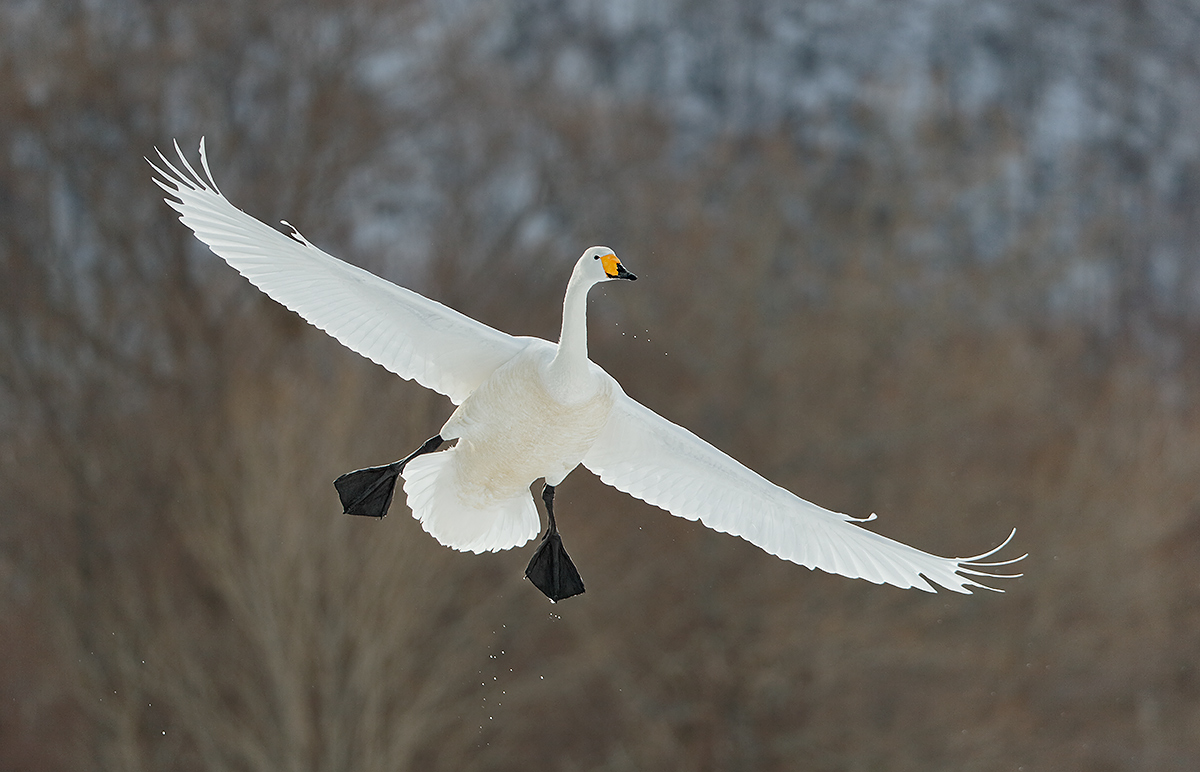
|
|
This incoming Whooper Swan image was created at 8:11am on February 20, 2014 on our great swan morning at Lake Kussharo on the Japan in Winter IPT with the Gitzo 3532 LS carbon fiber tripod, the Mongoose M3.6 head, the Canon EF 600mm f/4L IS II USM lens, the Canon 1.4x EF Extender III (Teleconverter), and the Canon EOS-1D X. ISO 800. Evaluative metering +1 2/3 stops off the snow: 1/2000 sec. at f/5.6 in Manual mode. Color temperature: 7000K. Central sensor/AI Servo/Surround Rear Focus AF on the bird’s left breast was active at the moment of exposure. Note that the point of focus was nicely on the same plane as the bird’s face. Click here to see the latest version of the Rear Focus Tutorial. Click on the image to see a larger version.
|
Flight at 840mm
A comment on the blog the other day asked “Is it true that AI Servo AF flight sequences made with a super-telephoto lens and a 1.4X TC would always include several out-of-focus images?” I replied that such assertions were ridiculous. With all of my big lenses and the 1.4X III TC virtually all images in a flight sequence are sharp on the bird’s eye. When many folks get one or more unsharp images in a flight sequence they are quick to blame the camera, the lens, the teleconverter, or all three. I look in the mirror and assume operator error. Most times I can put my finger on the reason that an image is not sharp. The most common one (often overlooked) is that the active AF sensor was on an area with little or no contrast. AF needs contrast to be able to see and to be able to track the moving subject. The next most common reason is pure operator error; the photographer was late in framing the image and acquiring focus; the shutter button was depressed before the AF system began to track the subject.
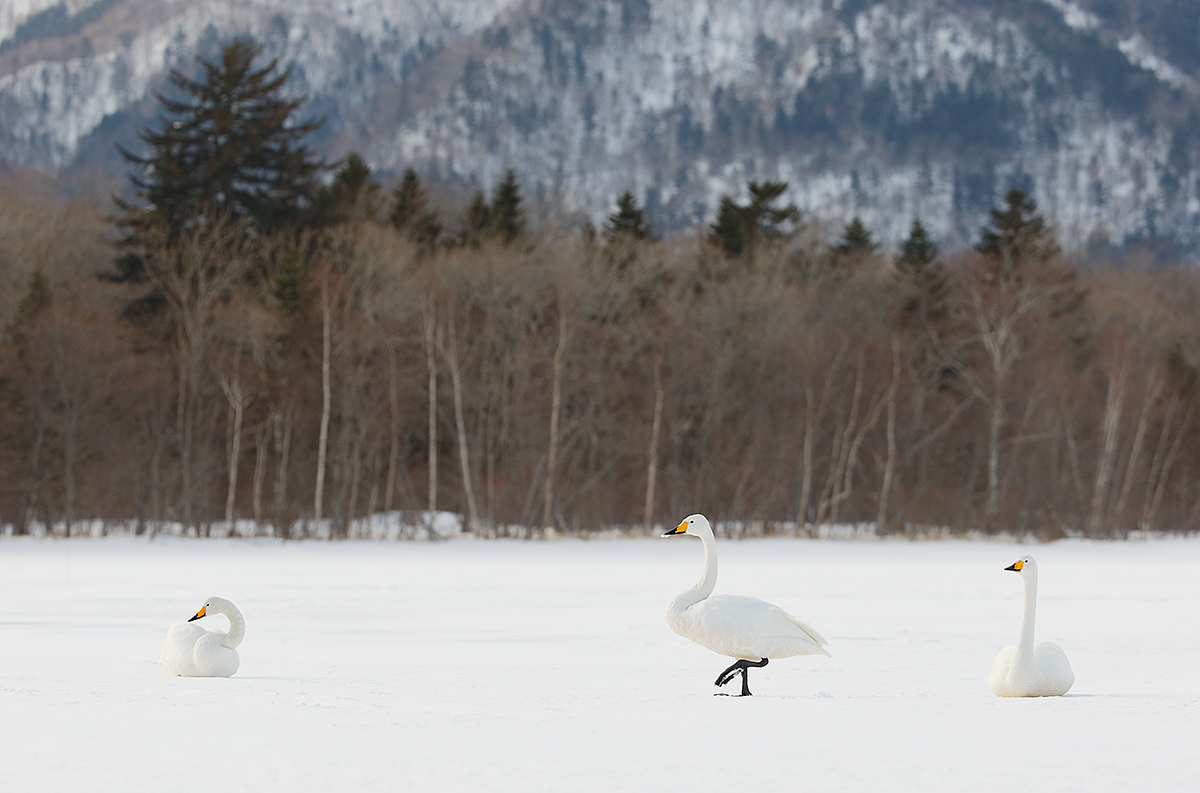
|
|
These Whooper Swans were photographed on the morning of February 20, 2014 at 7:55am on the Japan in Winter IPT with the Canon EF 200-400mm f/4L IS USM Lens with Internal 1.4x Extender (hand held at 200mm) and the Canon EOS-1D X. ISO 800. Evaluative metering +2 stops off the snow worked out to +1/3 stop as framed: 1/1250 sec. at f/5.6 in Manual mode. Color temperature: 7000K. Central Sensor/AI Servo-Surround/Rear Focus AF on the head of the bird in the middle and re-compose slightly while panning slowly. Click here to see the latest version of the Rear Focus Tutorial. Click on the image to see a larger version.
|
The Good and the Bad
What are the pleasing elements in the image above? What do you like about it? What is the biggest negative?
Note again the great versatility of the 200-400; dis-engaging the internal TC and zooming out allowed me to quickly get to 200mm and create the image that I wanted that included the swans and the distant woods. Learn more about the versatility of the 200-400 here.
|
This pair of Whooper Swans was photographed on the morning of February 20, 2014 at 8:21am on the Japan in Winter IPT with the Canon EF 200-400mm f/4L IS USM Lens with Internal 1.4x Extender (hand held at 400mm) and the Canon EOS-1D X. ISO 800. Evaluative metering +1 2/3 stops off the ice: 1/800 sec. at f/6.3 in Manual mode. Color temperature: 7000K. Central Sensor/AI Servo-Surround/Rear Focus AF on the eye of the right hand bird and re-compose slightly. Click here to see the latest version of the Rear Focus Tutorial. Click on the image to see a larger version.
|
Action City
On our first morning at Lake Kussharo we enjoyed swans and mist and steam. On our follow-up visit we enjoyed virtually non-stop action for three hours with incoming flight and displaying birds. After that many of the birds went to sleep and I went to work with the 600 and the 2X III TC. I will share those images with you here at some point.
Your Favorite?
Please take a moment to leave a comment and let us know which of the 4 images above is your favorite, and do let us know why.
Advanced Composition and Image DesignLearn to create more pleasing images by studying the section on Advanced Composition and Image Design in The Art of Bird Photography II (ABP II: 916 pages/900+ images on CD only.) |
|
Images copyright 2012: Denise Ippolito & Arthur Morris. Card design by Denise Ippolito. Click on the image to enjoy a spectacular larger version. |
Holland 2014 7 1/2-Day/8-Night: A Creative Adventure/BIRDS AS ART/Tulips & A Touch of Holland IPT. April 17-April 24, 2014: $4995 Limit: 12/Openings: 5
We still have room for 5 more flower photographers on this great trip.
Join Denise Ippolito, Flower Queen and the author of “Bloomin’ Ideas,” and Arthur Morris, Canon Explorer of Light Emeritus and one of the planet’s premier photographic educators for a great trip to Holland in mid-April 2014. Day 1 of the IPT will be April 17, 2014. We will have a short afternoon get-together and then our first photographic session at the justly-famed Keukenhof. Most days we will return to the hotel for lunch, image sharing and a break. On Day 8, April 24, we will enjoy both morning and afternoon photography sessions.
The primary subjects will be tulips and orchids at Keukenhof and the spectacularly amazing tulip, hyacinth, and daffodil bulb fields around Lisse. In addition we will spend one full day in Amsterdam. There will be optional visits the Van Gogh Museum in the morning and the Anne Frank House in the afternoon; there will be plenty of time for street photography as well. And some great food. On another day we will have a wonderful early dinner at Kinderdijk and then head out with our gear to photograph the windmills and possibly some birds for those who bring their longs lenses. We will spend an afternoon in the lovely Dutch town of Edam where we will do some street photography and enjoy a superb dinner. All lodging, ground transportation, entry fees, and meals (from dinner on Day 1 through dinner on Day 7) are included. For those who will be bringing a big lens we will likely have an optional bird photography afternoon or two.
Click here for additional info or to register.
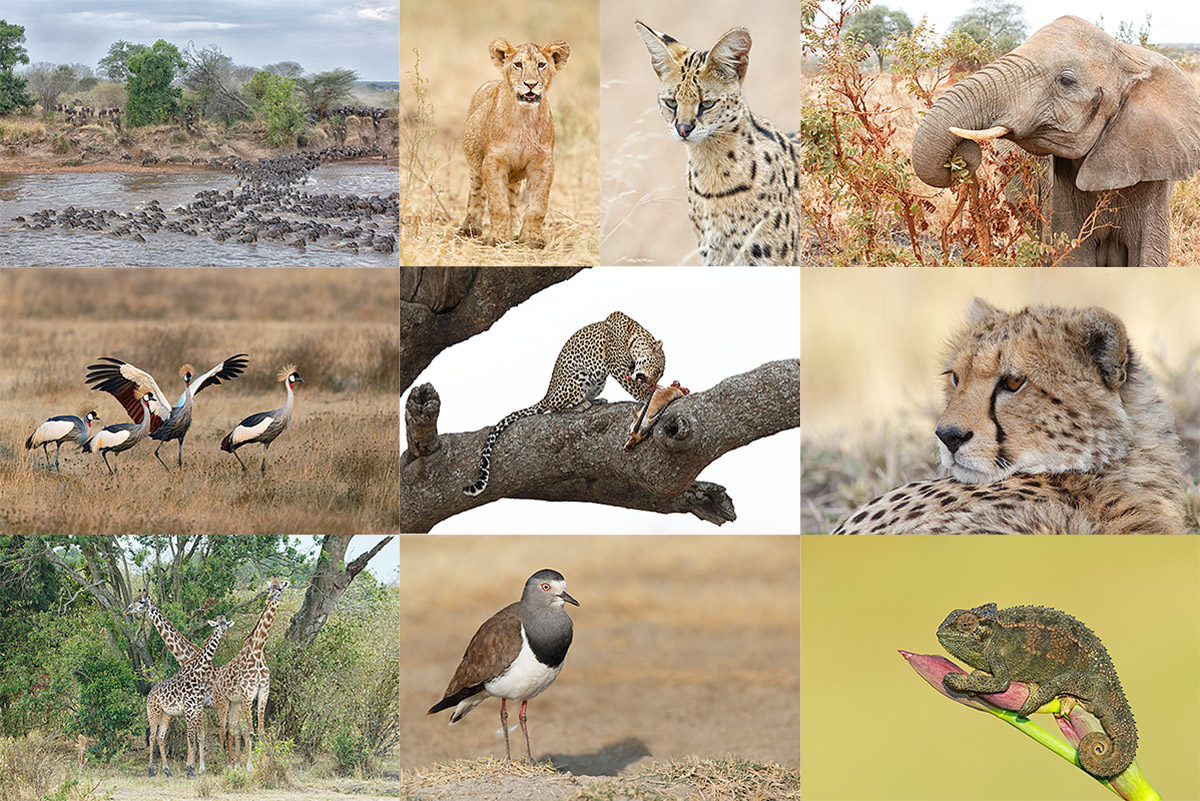
|
|
Join me for the 2014 Tanzania Summer Safari! |
2014 Tanzania Summer Safari, 14-day African Adventure/leave the US on August 9. Fly home on August 24: $12,999.
Co-leaders Todd Gustafson & Arthur Morris. The limit is 12. Three photographers/van; you get your own row of seats. Our trip is a bit more expensive than the average safari for good reason. It is the best. We have the best driver guides with a total of decades of experience. They have been trained over the years by Todd and by me to drive with photography in mind. We have the best and most knowledgeable leaders. We stay in the best lodges and camps. We hope that you will join us for what will be Todd’s 35th African safari, and my 8th.
If you are seriously interested please e-mail me; I will be glad to send you the illustrated PDF with the complete itinerary and deposit info.
What else makes this expedition unique?
•Pre-trip consultation and camera equipment advice
•Award-winning photographers as your guides
•A seamless itinerary visiting the right locations at the best time of year
•Hands-on photography instruction in the field
•Specially designed three roof-hatch photo safari vehicles
•Proprietary materials for preparation, including free copy of “A Photographer’s Guide to Photographing in East Africa.”
•Post-safari image critiques
All-inclusive (double-occupancy) except for your flights to and from Kilamajaro Airport, bar drinks, soda & water (except at the Intimate Tented Camp where everything is free for our entire stay), tips for drivers and camp staff, personal items, and trip insurance.
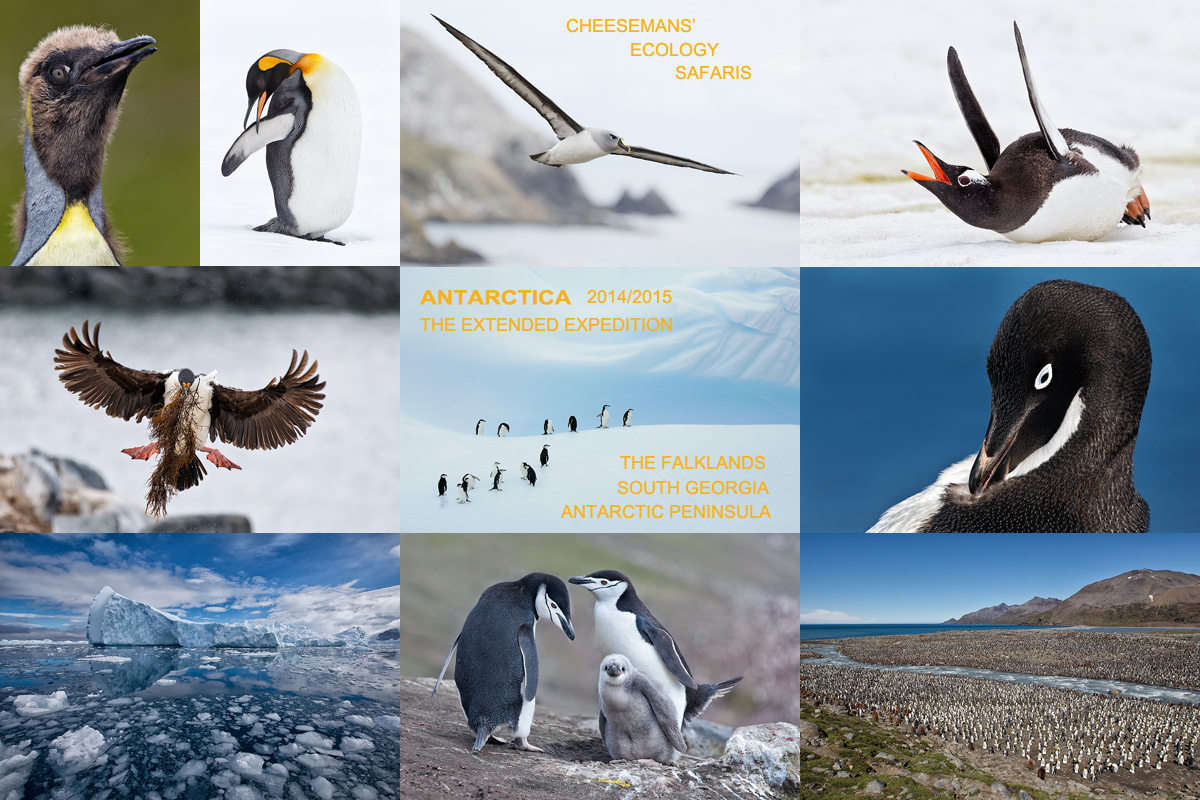
|
|
Breathe deeply, bite the bullet, and live life to its fullest; we all get only one ride on the merry-go-round… Join me on this great trip. Click on the image to enjoy a larger version. |
The Southern Ocean…
If you would like to explore the possibility of joining me on the Cheesemans’ Ecology Safaris Antarctica/The Extended Expedition Voyage< trip: Antarctic Peninsula, South Georgia and Falkland Islands: December 13, 2014 to January 10, 2015, click here for additional information and then shoot me an e-mail.
The DPP RAW Conversion Guide
To learn why I use Canon’s Digital Photo Professional (DPP) to convert every image that I work on, click here.
Support the BAA Blog. Support the BAA Bulletins: Shop B&H here!
We want and need to keep providing you with the latest free information, photography and Photoshop lessons, and all manner of related information. Show your appreciation by making your purchases immediately after clicking on any of our B&H or Amazon Affiliate links in this blog post. Remember, B&H ain’t just photography!




Amazon
Everyone buys something from Amazon, be it a big lens or deodorant. Support the blog by starting your search by clicking on the logo-link below. No purchase is too small to be appreciated; they all add up. Why make it a habit? Because I make it a habit of bringing you new images and information on an almost daily basis.
Typos
In all blog posts and Bulletins, feel free to e-mail or to leave a comment regarding any typos, wrong words, misspellings, omissions, or grammatical errors. Just be right. 🙂
IPT Info
Many of our great trips are filling up. See especially info on the South Florida, Holland, and Nickerson Beach IPTs. Two great leaders on most trips ensure that you will receive individual attention, have all of your questions answered, and learn a ton including how to think like a pro, see the situation, and get the right exposure every time. In addition you will have fun, and make lots of great images. Click here for IPT details and general information.

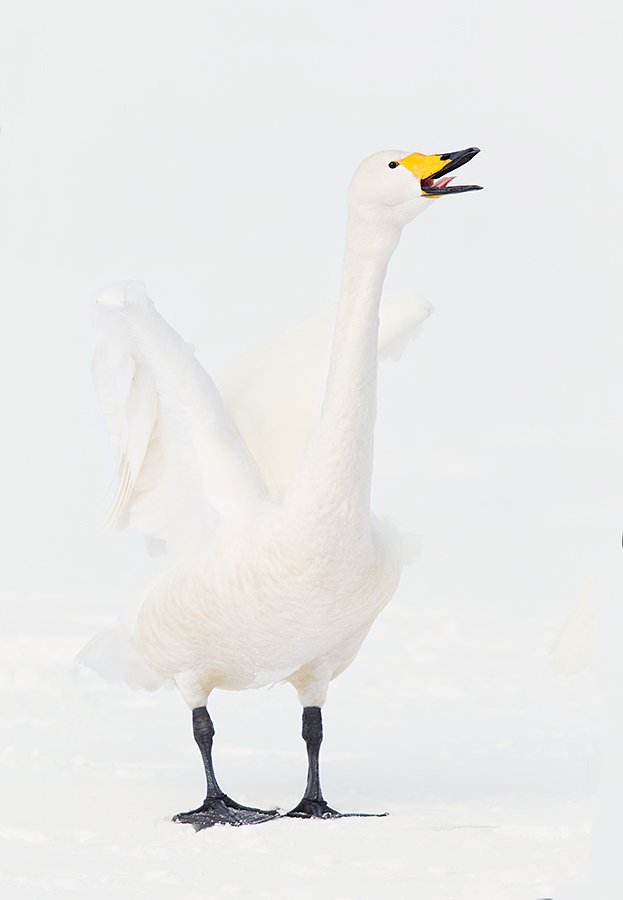
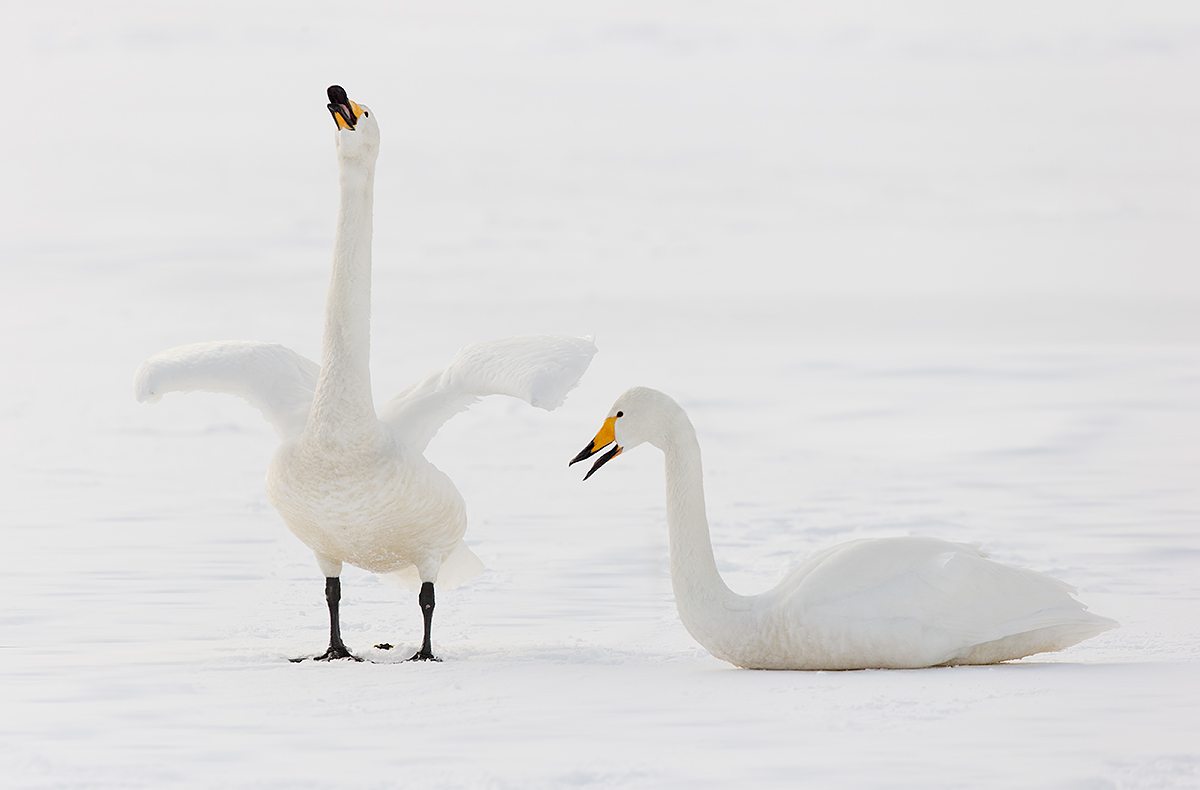
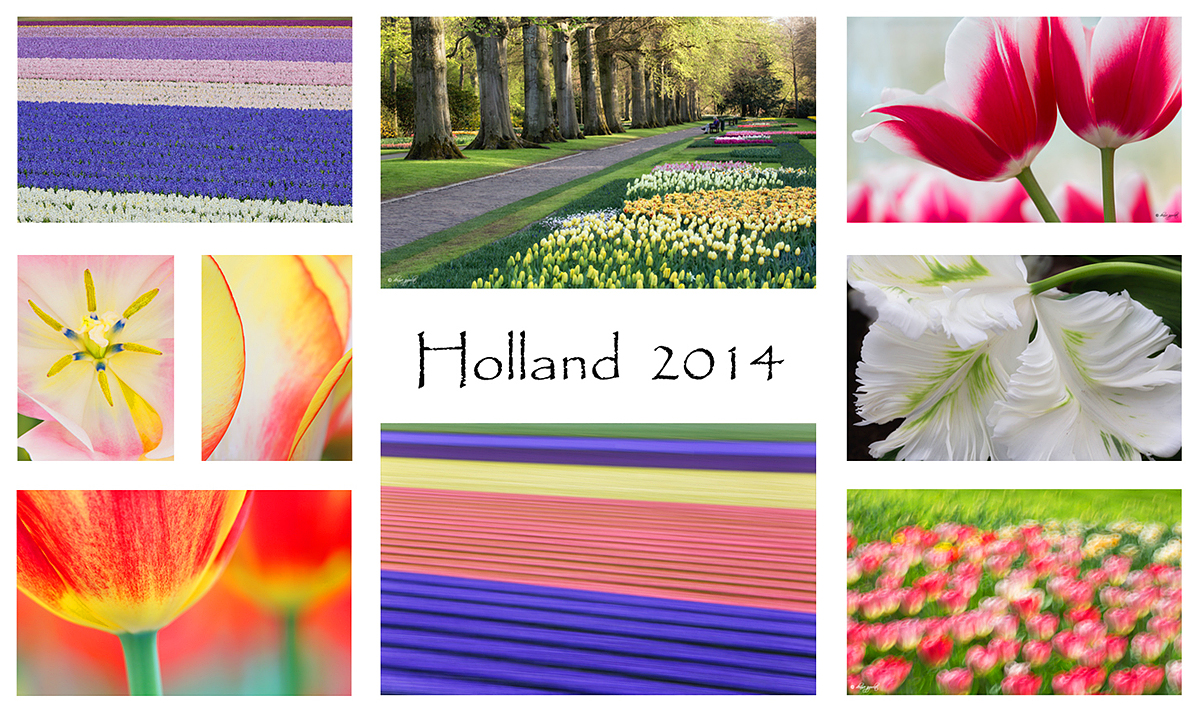















Image #1 Displaying Whooper Swan Vertical
My favorite, for sure. When I first saw this image I thought this will be my favourite, even before seeing the other images. None of the others change my mind. It is spectacular!!
Hi Artie,
Like all the images, but #1 is my fav, love the composition and detail.
#3 – pleasing elements for me are the two birds on the right hand side, negative for me is the left hand bird looking out of the frame.
Kind regards,
Ron
My fav is #1. I like the simplicity.
The interesting aspects of #3:
1) 3 distinct horizontal bands with 3 vertical zones defined by the bird positions.
2) 3 distinct neck positions, from right to left, quite literally 1, 2, and 3.
Biggest negative is the position of #2. It is not centered between 1 and 3 which weakens the vertical zones defined by bird positions. It is too high and crosses the bounds between the horizontal bands.
It seems that #2 could be repositioned to the left and down and made to look like a sitting swan like the other two. I’m not sure if the hole in the trees, left by the moved head, could be filled in. If it’s me then I’d say no but I’m betting Artie can.
hi artie-
thanks for the tip about not resting the 600 on the manual focus ring. i was at boaque last week photographing eagles. i knew i was doing someting wrong when i tried to recompose and the image went out of focus. the 600 was resting on the car window and probably on the focus ring. now i know what my problem was. thanks again.
danny
Hey Danny, You are most welcome. That’s why it’s a great idea to subscribe to the blog! artie
1 and 4 are favs for the joyful expressions of the swans, and great studies of the color white …head in the base of the tree line is a nit with the 3rd image, but I still like it for the sense of place it provides…I like the diagonals in the upper corners, too.
#2 is my favourite followed closely by #1. For #3, the biggest issue to me is the junction of snow/tree line going right through the middle swan’s head. I like the composition of #3 with the 3 different poses from the 3 swans and the vibrant yellow in the otherwise bleak weather.
#1 is my favorite. It is simple, high key and the position of the bird with the curvature of its wings and the amount of color in the legs and bill keeps my eye moving through the image. Enough detail in the body of the swan that brings you back to insure you have the whole bird. Great image.
Artie….#2 and #4 are my favorites, especially #2 with the flight shot!!!!
Image #3 Biggest Negative? IF I’m right, I wouldn’t call it huge..huge,
but I’d say the bottom of the tree line just barely intersecting the
neck of the second swan.
My favorite is #2 simply cause I don’t see many flight shots of swans.
Doug